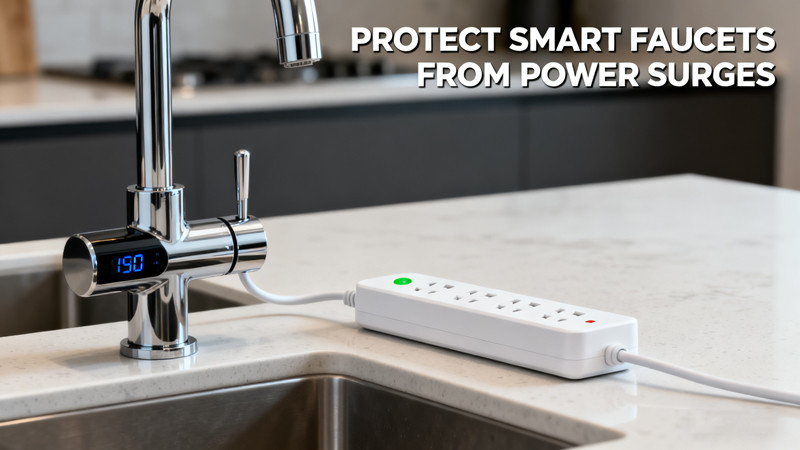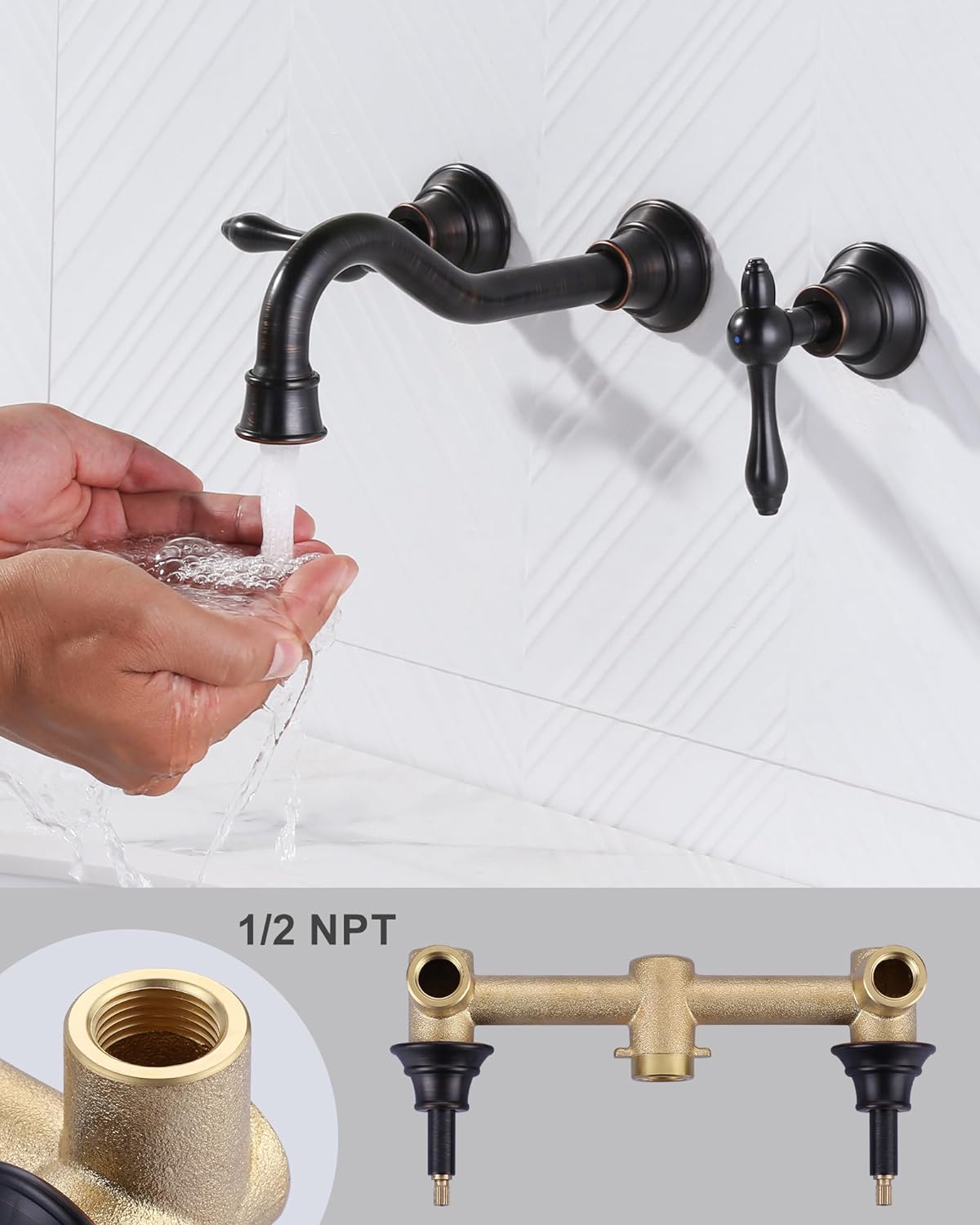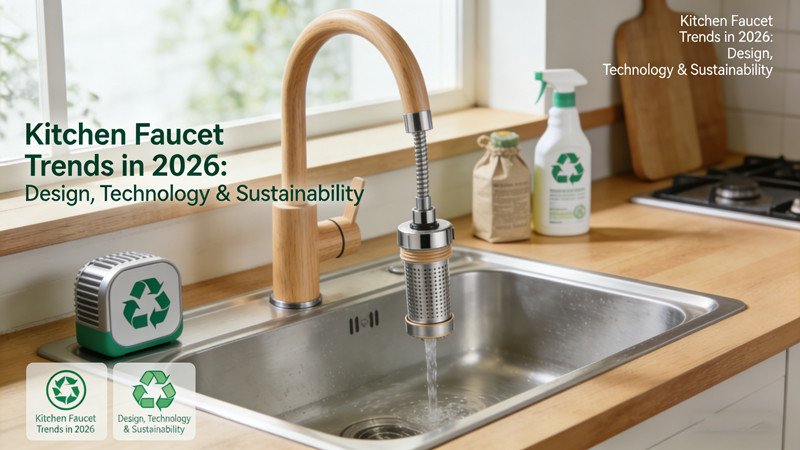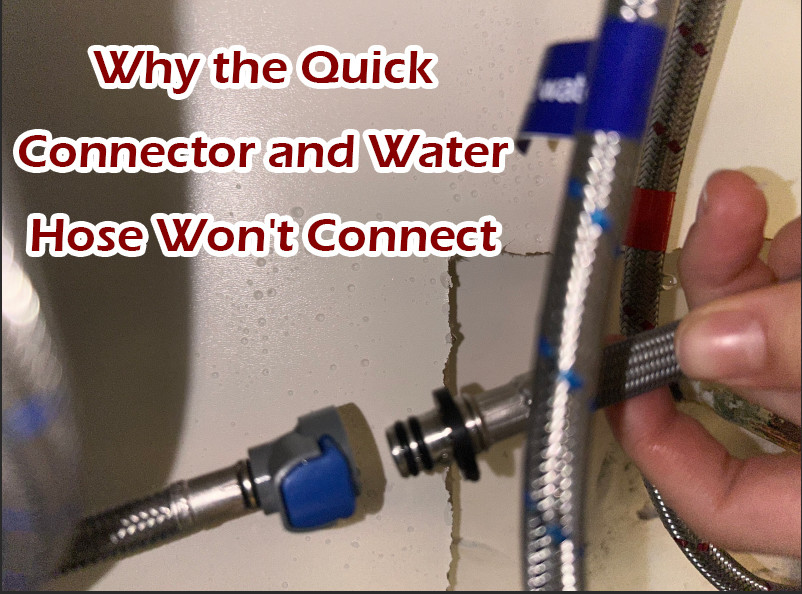
Smart faucets have revolutionized the modern kitchen and bathroom, offering touchless control, precise temperature adjustments, and even integration with voice assistants like Alexa or Google Home. These high-tech fixtures not only enhance convenience but also improve hygiene and water efficiency. However, with their advanced electronic components and connectivity features, smart faucets are more vulnerable to power-related issues—especially power surges.
A power surge is a sudden increase in electrical voltage that can damage or destroy electronic devices. Even a brief surge lasting milliseconds can cause significant harm to sensitive circuits. Since smart faucets rely on sensors, microprocessors, and sometimes Wi-Fi modules, protecting them from power surges is crucial to ensuring their longevity and reliable performance.
What Causes Power Surges?
Before exploring protection methods, it’s important to understand what causes power surges in the first place. These voltage spikes can occur due to several reasons:
- Lightning Strikes: The most dramatic and dangerous cause. Even if lightning doesn’t hit your home directly, it can induce surges through power lines and enter your electrical system.
- Utility Grid Switching: When power companies switch grids or restore power after an outage, it can create a brief surge.
- High-Powered Appliances: Devices like air conditioners, refrigerators, and washing machines draw large amounts of power when they start up, causing voltage fluctuations that affect other electronics on the same circuit.
- Faulty Wiring: Outdated or damaged wiring can’t regulate voltage properly, leading to unpredictable spikes.
- Internal Electrical Issues: Problems with transformers, circuit breakers, or overloaded circuits can all contribute to surges.
Even small, frequent surges can slowly degrade the internal electronics of your smart faucet, leading to intermittent malfunctions or complete failure over time.
Why Power Surge Protection Matters for Smart Faucets
Unlike traditional faucets that rely purely on mechanical components, smart faucets include delicate electronic systems—infrared sensors, control boards, solenoid valves, and Wi-Fi modules. These parts operate within specific voltage ranges and can be easily damaged by excess current. Once a surge damages these components, repair costs can be significant, often requiring replacement of the entire unit.
In addition, power surges can cause software glitches. A surge may not physically burn a circuit but can corrupt the microprocessor’s data, resulting in malfunctioning sensors, random water activation, or loss of connectivity. For faucets connected to smart home systems, such failures can also affect other linked devices.
Fortunately, you can take simple yet effective measures to safeguard your investment. Here’s how to protect your smart faucet from power surges and ensure years of smooth operation.
1. Use a Quality Surge Protector
The first line of defense against power surges is a reliable surge protector. If your smart faucet plugs into an outlet (common in kitchens and some bathrooms), make sure it’s connected through a certified surge protector. Look for models with:
- High joule ratings (the higher, the better—it measures how much energy the protector can absorb).
- UL 1449 certification, which ensures tested surge protection standards.
- Indicator lights to show whether the device is still offering protection.
For faucets that connect through a low-voltage adapter or hub, plug those power adapters into surge-protected outlets as well. This simple step can absorb small surges before they reach your faucet’s control system.
2. Consider a Whole-House Surge Protector
For maximum protection, especially in surge-prone regions, installing a whole-house surge protection device (SPD) at your main electrical panel is a smart investment. These devices block large voltage spikes from entering your home’s electrical network, protecting every outlet—including the one your smart faucet relies on.
While the upfront cost is higher, a whole-house SPD protects not only your faucet but also your smart home systems, refrigerator, oven, and other electronics. It’s especially recommended for homeowners who experience frequent thunderstorms or inconsistent utility power.
3. Install an Uninterruptible Power Supply (UPS)
Some smart faucets—particularly commercial or luxury residential models—are integrated with digital control units. If your faucet relies heavily on software and connectivity, consider powering it through a UPS (Uninterruptible Power Supply). A UPS not only provides surge protection but also keeps the system running temporarily during a power outage, preventing data loss or abrupt shutdowns that could harm internal software.
Choose a UPS rated for small electronic appliances (around 300–600 watts is usually enough for faucet systems and hubs).
4. Ground Your Electrical System Properly
Improper grounding is one of the most overlooked causes of power surge damage. Grounding provides a safe pathway for excess electrical energy to dissipate harmlessly into the earth. Without it, voltage spikes travel through connected devices—including your smart faucet.
To ensure your system is properly grounded:
- Have an electrician check that your home’s ground wire is intact and connected to a proper grounding rod.
- Make sure any outlet near sinks or water sources is a GFCI (Ground Fault Circuit Interrupter) type for added safety.
- If your faucet connects to a smart home hub, ensure that hub and all related devices share the same grounded circuit.
5. Unplug During Severe Storms
When severe thunderstorms are expected, the most effective protection is the simplest one—unplug your smart faucet’s power adapter. Lightning strikes can overwhelm even the best surge protectors, especially if they hit nearby power lines directly. Disconnecting during extreme weather ensures zero risk of electrical damage.
6. Maintain Regular Inspections
Just like any other smart device, your faucet’s performance depends on the condition of its electrical components. Check the power adapter, wiring, and connectors for signs of wear or discoloration. Replace any damaged cables immediately. If you notice erratic faucet behavior after a storm or outage, power-cycle the unit or contact the manufacturer’s support team to check for software issues.
7. Use Voltage Stabilizers in Areas with Unstable Power
If you live in an area where the power supply fluctuates frequently, consider using a small voltage stabilizer. It regulates the incoming current, providing your faucet and its control unit with steady, safe voltage. This can prevent gradual wear on circuits that might not be caused by surges but by ongoing instability in the power line.
Final Thoughts
Smart faucets represent a major leap in home technology, offering both luxury and efficiency. But their advanced electronics make them more sensitive to electrical disturbances. Power surges can happen unexpectedly—from storms, faulty wiring, or household appliances—and even a small surge can shorten your faucet’s lifespan or disrupt its functions.
By investing in quality surge protection, ensuring proper grounding, and adopting simple precautions like unplugging during storms, you can safeguard your smart faucet from costly damage. A little foresight goes a long way in protecting both your device and your home’s broader smart ecosystem—keeping your modern faucet running smoothly and intelligently for years to come.
 WOWOW Faucets
WOWOW Faucets





